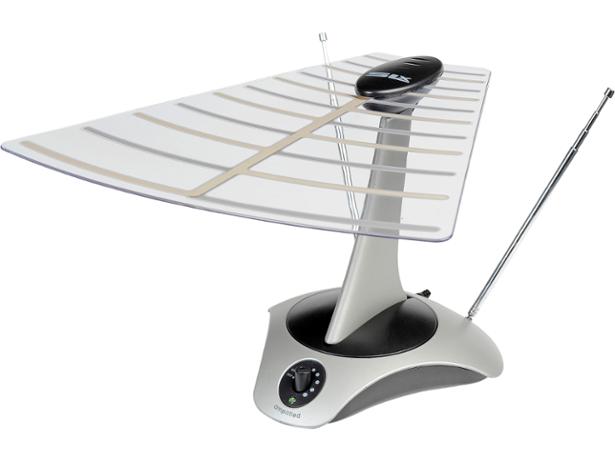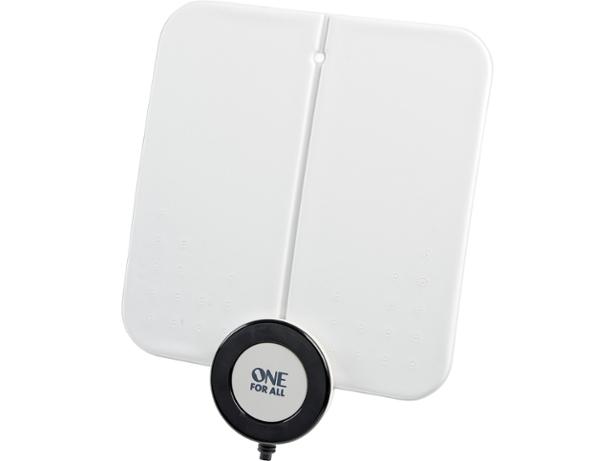How to set up an indoor aerial

When using or installing a rooftop aerial isn't an option for you, a Best Buy indoor TV aerial can maximise your chances of getting good Freeview reception on your television.
However, where you live, the size of surrounding buildings and where you place the aerial will all play a part in how well it works. We show you how to set up an indoor aerial in your home and get the best TV picture.
If you've not bought your aerial yet, see which ones we recommend with our indoor aerial reviews
Step 1: Choosing the right aerial
Indoor aerials come in a variety of shapes and sizes. Some have amplifiers designed to help pick up weak signals more easily, however we find they can sometimes actually cause picture interference. Go for one of our Best Buy indoor aerials and maximise your chances of getting good reception.
If you can't, ask the shop if you can return the aerial in case it doesn’t work properly.
For more on this, head to our guide on the best indoor TV aerials.
Step 2: Getting set up
Plug the aerial cable into the back of the TV or set-top box you're going to use. Some aerials are omnidirectional, meaning you don't have to worry about aligning them to match your local transmitter. However, most will need you to position them in either horizontal or vertical alignment. Try looking at the rooftop aerials on properties around you and see which way they’re facing. Then adjust your aerial accordingly.
If you're using a new television or set-top box, then you'll need to tune it to the local digital channels. As you won't yet know the best position for your indoor TV aerial, this could be a problem as you may not be getting full reception. A possible solution is to attach the TV or box to a working aerial connection in a different room in your home (if one is available), and then tune in. Alternatively, you could take it to a friend or neighbour's house and tune to their rooftop aerial.
Step 3: Positioning the aerial
Switch your TV to a Freeview channel (BBC One is a safe choice), and start slowly and carefully moving your indoor aerial around to find good reception. We typically find aerials work best near a window at head height. If this is some distance away from where the TV is placed, then you may need extension leads.
You’ll need cables with 'male' and 'female' connectors for this, but if you're not sure just ask for help in a home electricals or hardware shop.
Step 4: Getting all the channels
Digital TV channels are combined into eight national bundles (plus one local one), called multiplexes, and transmitted at different frequencies across the TV airwaves. Poor reception in one part of the band could mean you miss out on an entire multiplex and all the channels it holds. To check whether you have full reception, tune to BBC One, ITV, BBC One HD, Dave, Yesterday and QVC (each channel is on a different multiplex).
A good aerial should give you at least the first three channels, but the latter three can depend on where you live. The Digital UK website has a useful postcode checker for you to find out which channels you should expect to receive.
Step 5: Securing
Finding the optimal position for your indoor aerial is crucial in getting good, sustained TV reception, and we therefore recommend securing it when you're up and running. Adhesive Velcro pads are a good option, or Blu-Tack can work well, too. Some aerials can even be wall mounted, which makes it easier to hide them away from view.
Top tips if you still can't get good reception

Even Best Buy indoor aerials sometimes can't get good TV reception in your home. This can be down to a number of factors, such as where your house is in relation to other buildings.
If you still have poor reception, then there are a number of possible solutions.
- Install the indoor aerial in a higher location and, if possible, running an extension lead down to your TV.
- Wire an extension from a working rooftop aerial to your TV with poor reception (we'd advise getting a professional to do this).
- Get a rooftop aerial installed. Again, get a professional - check the Confederation of Aerial Industries for more on this.
- Use a video sender card to re-broadcast the Freeview signal from a working set top box in your home. These can cost around £25, but go into the hundreds for the top end models.
If none of that works and you don't want the expense of pay-TV, Freesat is a subscription-free, digital satellite TV alternative. You get plenty of standard and high-definition channels at a one-off cost, although you'll need to get a satellite dish installed if you don't have one already. To find out more, head to our guide to what is Freesat?



